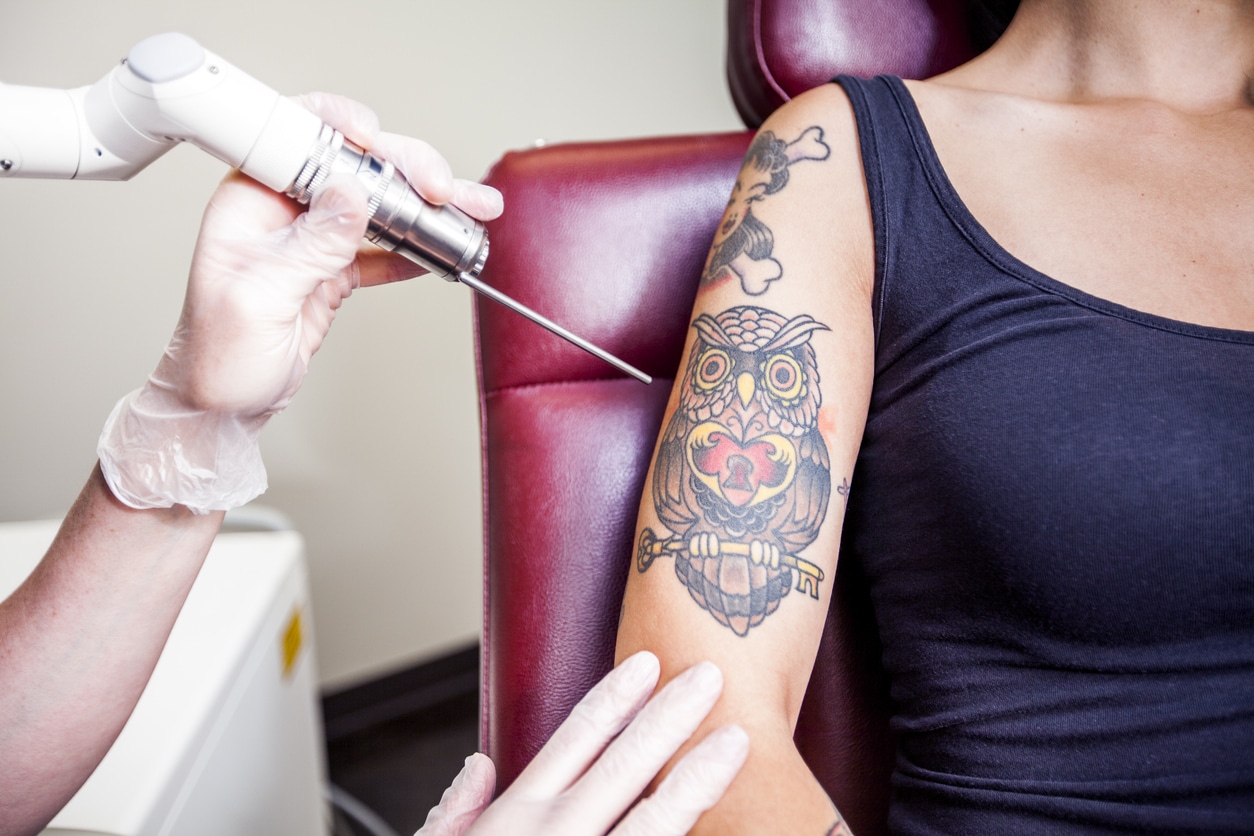What happens to the tattoo during laser removal and how does it work?
To remove tattoos, the laser is considered the most effective technology with the least chance of side effects. But do you know how the laser tattoo removal process works? Understand each of the steps and the necessary precautions.
To do tattoo removal, lasers “break down” pigment colors with a high-intensity beam of light. In practice, black tattoo pigment absorbs all laser wavelengths, which makes the color easier to treat. Other colors can only be treated by lasers selected based on the pigment color.
The first thing the practitioner does, after protecting the patient’s eyes, is to test the skin’s reaction to the laser to determine the most effective energy to treat. The technician then uses the laser to pass pulses of intense light through the upper layers of the skin, which will only be absorbed by the tattoo pigment.
This means that smaller tattoos require fewer wrists, for example, but even smaller tattoos require multiple sessions. The amount needed depends on a number of factors such as the age, size, and color of the tattoo, skin color, and even the depth of the pigment.
Does laser tattoo removal hurt?
Laser tattoo removal is described as uncomfortable, and there are professionals who apply numbing cream or even inject anesthesia. It is also common for the professional to indicate the use of an ice pack to calm the treated area and apply an antibiotic cream or ointment and a bandage to protect it. Another care is to apply sunscreen when you are outdoors.
Laser treatment is generally safer than many other tattoo removal methods, such as excision, dermabrasion, or salabrasion, because laser treatment selectively treats the pigment in the tattoo. And there are very few side effects.
Laser tattoo removal before and after
One must understand that the tattoo removal area is at risk of infection and there is a risk of getting a permanent scar at the part of the skin. Also, the tattoo is unlikely to be completely removed. In many cases, certain colors can be removed more effectively than others. To get an idea, blue or black tattoos respond best to laser treatment.
One of the risks of laser tattoo removal is hypopigmentation, i.e. the treated skin looks paler than the surrounding skin. The ironic thing is that the opposite can also happen, hyperpigmentation, leaving the affected skin darker than the rest of the skin.
To ensure proper treatment and care, experts recommend researching thoroughly and finding a reputable plastic surgeon.
Featured image credit: Pinnacle Dermatology MD
